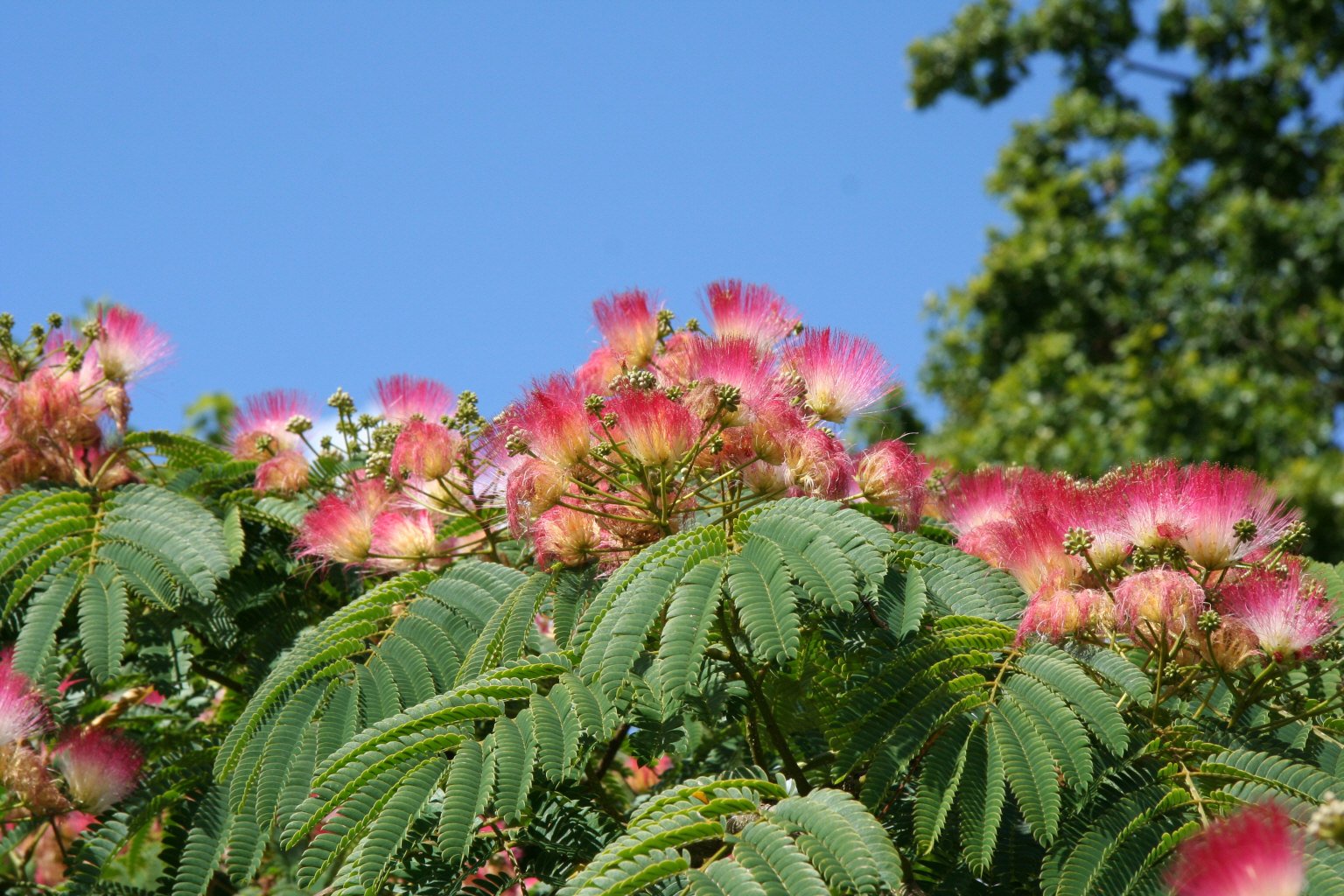Albizia julibrissin f. rosea
pink silk tree
A broad-crowned, medium-sized deciduous tree with large, mimosa-like bipinnate leaves. Fluffy rose-pink flower-heads, with prominent stamens, open in summer

Buy this plant
Size
Ultimate height
4–8 metresTime to ultimate height
10–20 yearsUltimate spread
2.5–4 metresGrowing conditions
Moisture
Well–drainedpH
Acid, Alkaline, NeutralColour & scent
| Stem | Flower | Foliage | Fruit | |
| Spring | Green | |||
|---|---|---|---|---|
| Summer | Pink | Green | ||
| Autumn | ||||
| Winter |
Position
- Full sun
Aspect
South–facing or West–facing
Exposure
Sheltered Hardiness
H4Botanical details
- Family
- Fabaceae
- Native to GB / Ireland
- No
- Foliage
- Deciduous
- Habit
- Bushy
- Genus
Albizia can be deciduous trees, shrubs or climbers, with attractive bipinnate leaves with tiny leaflets, and flowerheads composed of many small flowers with prominent stamens
- Name status
Correct
- Plant range
- Ethiopia, Iran to Japan, C, China
How to grow
Cultivation
Grow in well-drained soil, preferably in full sun for best flower production. Alternating mild and cold spells may damage top-growth. Saplings should flower in three years. Drought-tolerant and thrives in high summer heat and humidity
Propagation
Propagate by rooting semi-ripe cuttings with bottom heat in summer or by seed: collect seeds from pea-like pods and soften their coats in very hot water, leave to cool for 24 hours and sow. After germination transplant into root trainers to avoid disturbing tap roots
Suggested planting locations and garden types
- City and courtyard gardens
- Mediterranean climate plants
- Coastal
Pruning
Pruning group 1 or pruning group 13 if wall-trained
Pests
Generally pest-free
Diseases
May be susceptible to verticillium wilt and honey fungus
Love gardening
Sign up to receive regular gardening tips, inspiration, offers and more
View our Privacy Policy
Get involved
The Royal Horticultural Society is the UK’s leading gardening charity. We aim to enrich everyone’s life through plants, and make the UK a greener and more beautiful place.